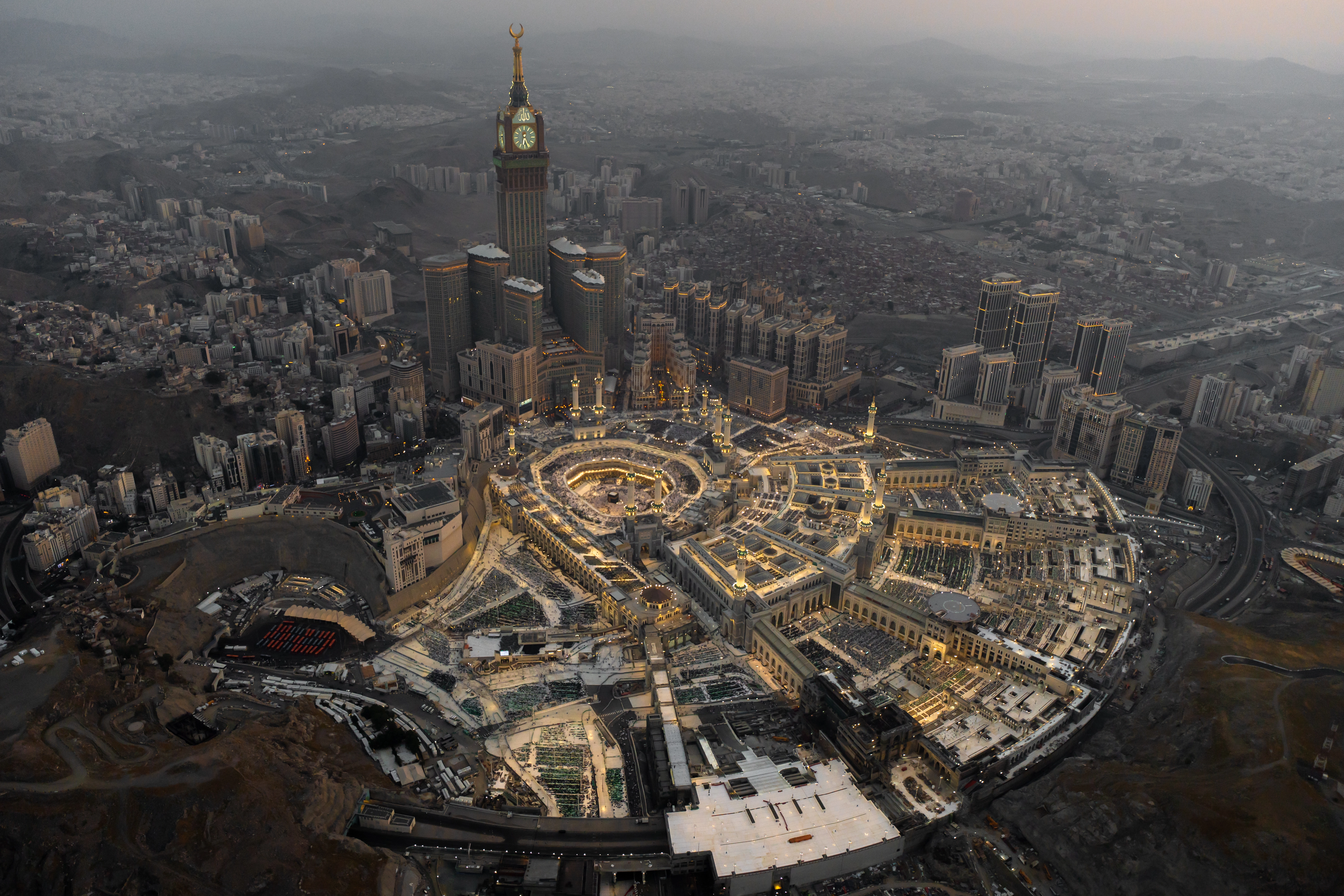
Architecture of the Grand Mosque
Makkah, the holiest place on earth, is the site of the first revelation and the birthplace of the Prophetic mission, chosen by Allah for His Sacred House and endowed with exceptional virtue and sanctity. Throughout Islamic history, rulers have devoted significant efforts to its development. In the prosperous Saudi era, Makkah witnessed massive expansions of the Grand Mosque, with particular attention from the Custodian of the Two Holy Mosques, King Fahd ibn Abdul Aziz Al Saud, may Allah have mercy on him. These expansions were driven by the increasing number of pilgrims and visitors, necessitating enhanced facilities and developments in and around the Grand Mosque.
Expansions of the Grand Mosque
First Expansion
In 1406 AH, King Fahd ibn Abdul Aziz Al Saud, may Allah have mercy on him, ordered the tiling of the roof of the first Saudi expansion with heat-resistant cool marble. Initially designated for electrical works, the roof’s scattered electrical networks hindered worshippers. The King ordered their consolidation into aesthetically pleasing domes. The roof, spanning 61,000 square meters, accommodates 90,000 worshippers. Five escalators were installed to facilitate access to the roof and first floor, along with five overhead bridges for entry and exit from the north side.
Second Expansion
On 2 Safar 1409 AH, King Fahd laid the foundation for the second Saudi expansion, located in the western part of the mosque in the area known as the Small Market between Bab al-Umrah and King Abdul Aziz Gate. The project included a basement, ground floor, and first floor, designed with comprehensive air conditioning supported by a cooling station in Ajyad. Openings in the bases of round columns absorbed hot air while pumping cold air from the central station. The expansion added fourteen new doors, increasing the total to 112 doors, and included two buildings for escalators in the north and south, raising the total number of escalators to nine. The mosque’s courtyard was paved with heat-resistant marble to ease prayers during crowded times. In 1415 AH, the Safa area on the first floor was expanded to facilitate Sa’i, narrowing the Safa opening beneath its dome. In 1417 AH, buildings around Marwah were demolished, increasing its area from 245 to 375 square meters and widening the entrance corridor from Marwah to the first-floor Sa’i path. In 1418 AH, the Raqubah Bridge was built, connecting the mosque’s roof to the Raqubah area near Marwah to ease movement. The casing of Maqam Ibrahim was renewed with gold-plated copper, crystal, and decorative glass.
Third Expansion
Initiated during the reign of King Abdullah ibn Abdul Aziz, may Allah have mercy on him, in 1432 AH, the third expansion was completed and inaugurated by the Custodian of the Two Holy Mosques, King Salman ibn Abdul Aziz Al Saud, may Allah protect him, in 1436 AH, with ongoing works continuing to this day.
Main Projects of the Expansion
King Salman inaugurated five major projects within the comprehensive third Saudi expansion:
-
The main expansion building.
-
The courtyards project.
-
The pedestrian tunnels project.
-
The central services station for the Grand Mosque.
-
The first ring road surrounding the mosque area.
Crown Prince Mohammed ibn Salman ibn Abdul Aziz Al Saud, may Allah protect him, conducted inspection tours to monitor the progress of the expansion and related service projects, aimed at increasing the Grand Mosque’s capacity to accommodate visitors and pilgrims, aligning with Saudi Vision 2030.
Continued Care and Development
The expansions in the prosperous Saudi era reflect the Saudi leadership’s commitment to the Grand Mosque. These developments have significantly enhanced the experience of pilgrims and visitors in terms of comfort and safety. By Allah’s grace, the Grand Mosque has become one of the world’s greatest religious projects, and Makkah remains the primary Qibla for Muslims. The Kingdom continues its journey of prosperity and development, serving the Two Holy Mosques and their visitors while spreading Islam’s noble message worldwide, in alignment with Saudi Vision 2030.